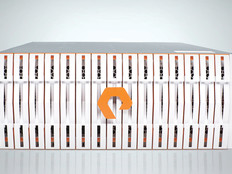How Cloud Computing Is Transforming College Admissions Operations
For many colleges and universities, the materials needed to render a well-considered admissions decision can add up to hundreds of thousands of documents a year. The number of applications submitted for admission is increasing annually, thanks to the ease of web-based products, such as the Common Application.
Some large schools have found that their tried-and-true processes cannot support the volume. Smaller schools, have found it difficult to identify those with the best “fit” for their institutions. In short, the business of admissions is undergoing a sea change, driven by increased expectations of efficiency and personalization, at the same time application numbers are skyrocketing.
Disrupting a Time-Honored Process
The marketplace is placing significant demands on a time-honored process. The integrity of the admissions decision is under siege as a result of ineffective, stopgap responses to high application volume. To fully understand the nature of this pressure, it’s important not to think of the application as the sole vehicle in the admissions process. In addition to the application, submitted documents typically include transcripts, letters of recommendation, essays and test scores. Other required materials may be as varied as architectural plans, photographs, writing samples and artwork.
At some schools, the long-standing method of sifting through this information has not changed much from mainframe days. While online applications and web-based inquiry forms have put a new face on the process, the internal workings have remained surprisingly intact. Many institutions have found that numbers are reaching the point where these processes break down or become too costly to sustain because of the additional need for temporary workers, overtime and the like.
In its entirety, the process is time consuming, requiring space, part-time staff and a concentrated effort to meet decision deadlines. Most importantly, there are numerous opportunities for error or omission.
These days, a number of institutions are taking advantage of cloud technology to eliminate or downplay the use — and the risks — of a physical folder. These options accelerate the flow of information to and from the applicant and those who prepare or evaluate the submission.
Big Data in the Admissions Office
An electronic “document” can take any form: video, digital images (scanned documents or photographs), web-based applications and inquiry forms, as well as test scores and demographic data provided by sources such as ACT and the College Board. These data and documents are compiled in a secure “virtual folder,” easily accessed over the web by those who have permission. Some schools choose to outsource the scanning of paper documents to a third party, significantly reducing on-campus data entry.
Business logic within the cloud-based system determines that required documents have been received, and the completed application is then routed to an admissions counselor’s work queue. The application can be evaluated from anywhere if web access is available. Essentially, the process has removed significant data entry and assembly tasks.
As colleges and universities struggle with the impact of increased application volume and increased expectations around value and personalization, cloud technology is rapidly becoming the solution.
This is part one of a four-part series on how cloud computing is changing admissions operations in higher education. In part two of our series, we’ll look at the impact on the applicant.









